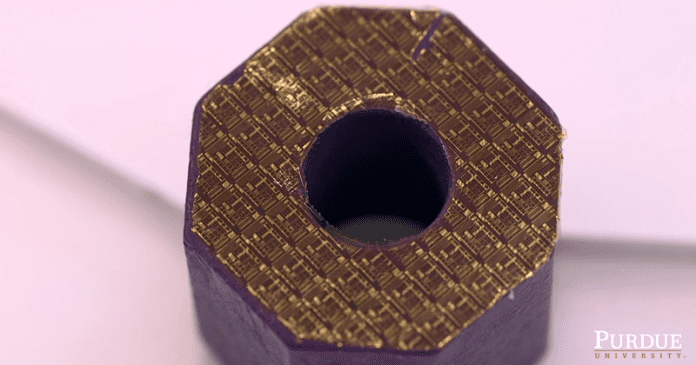One of IoT’s needs is to have versatile electronic circuits to adapt to all types of objects and uses. The graphene was a step in that direction but innovation in other technologies and solutions not stagnated, and has recently introduced a new method of producing electronic circuits, more efficient and versatile. In a joint research project at Purdue University and the University of Virginia, both located in the United States of America (USA), a new method of producing and applying electronic circuits has been devised. In the current paradigm of producing electronic circuits, these are produced through a “silicon wafer” that serves as a substrate and has rigid properties and little prone to physical changes. At the end of production, they use mediums with high temperatures and use specific chemicals to separate the wafer from the circuit, which was previously coupled. The innovation present in this work of the Universities of Purdue and Virginia published in the “Proceedings of the National Academy of Sciences” which is in the method of production of the electronic circuits, thus it does not need a silicon wafer for each circuit produced, being this previously indispensable symbiosis. The new method, called “transfer printing”, will greatly reduce production costs because it uses a single “silicon wafer” to produce numerous electronic circuits and its extraction process becomes quite simple and it is only necessary to immerse the circuits in water, at room temperature. These novelties are feasible due to the use of a layer of ductile metal, such as nickel, between the “silicon wafer” and the kind of film paper containing the electronic circuits.
The use of a kind of “film paper” associated with electronic circuits allows a self-adhesive effect and is able to apply the circuits on various surfaces and objects, thus granting these characteristics of the Internet of Things device. As it was said by Chi Hwan Lee, an assistant professor in the Department of Biomedical Engineering and Mechanical Engineering at Purdue University “we could customize the sensor, stick it to a drone, and send the drone to dangerous areas to detect gas leaks, for example.” With a tendency to create, more and more, intelligent objects associated with the Internet of Things, this new process of producing electronic circuits could be a significant step in this direction. Its disposable application properties on various objects will be particularly interesting in allowing these objects to communicate with others and send telemetric data, as typically happens on IoT devices. So, what do you think about this? Simply share all your views and thoughts in the comment section below.
Δ


